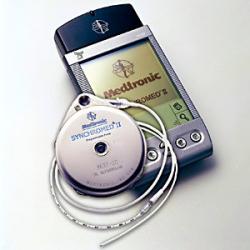All Departments
- Endoscopy
- kyphoplasty
- Minimal Disc Protrusion
- Posture
- Radio Frequency Ablation
- Spinal Cord Stimulator
- Spinal Drug Delivery Systems

Emergency Cases
+91 98252 63969Spinal Drug Delivery Systems
WHAT IS SPINAL DRUG DELIVERY SYSTEMS?

A surgically implanted programmable pump and catheter that delivers medication directly into the intrathecal space where fluid flows around the spinal cord.
Because drug is delivered directly to where it’s needed most in the spinal fluid, it relieves pain or spasticity with smaller amounts of medication (approximately 1/300 of an oral dose) than when drug is taken orally. This method of delivery may help minimizes side effects that can result from oral medication.
Once it has been determined that therapy is likely to be effective, a surgeon performs an operation to place a battery-powered pump. The procedure typically lasts about 1 to 2 hours.
The entire hospital stay is usually 4 to 7 days, during which time the pump is programmed to deliver the best possible dose of drug. A notable decrease in pain or the tone of spastic muscles is usually noticeable within several days of the operation, but significant improvements in function may take longer to be evident.
The dose of drug can be adjusted whenever necessary by reprogramming the pump in the doctor’s office. The reservoir is refilled by injection as needed, usually every 1 to 6 months. When the batteries run low, about every 7 years, the entire pump is replaced.
The Intrathecal Drug Delivery system consists of:
Pump – a surgically placed, battery-powered programmable pump with a reservoir infuses the drug at a programmed rate via the catheter.
Catheter – a flexible silicone tube delivers medication from the pump to your body
a drug that reduces severe spasticity or pain.
CONTRADICTIONS
When infection is present; when the pump cannot be implanted 2.5 cm or less from the surface of the skin; when body size is not sufficient to accept pump bulk and weight; when contraindications exist relating to the drug; drugs with preservatives.
The patient must realize that single target lesioning may not be sufficient, necessitating complementary blocks for better pain relief.
The patient must realize that single target lesioning may not be sufficient, necessitating complementary blocks for better pain relief.

